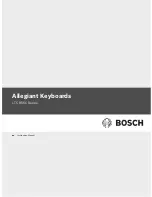
12
Inside Evolver
Before going through the individual parameters, following is a brief description of
Evolver’s architecture. The signal flow diagram on the next page is a good starting
point for understanding how Evolver works.
The Analog Side
Evolver’s analog electronics consist of two identical (Left/Right) synth sections, each
with an analog waveshape oscillator, a 2/4 pole resonant lowpass filter, and a Voltage
Controlled Amplifier (VCA). Control voltages are generated by the processors to
control the analog components.
The Digital Side
Surrounding the Analog electronics is a high-speed Digital Signal Processor (DSP)
that both pre- and post-processes the audio signal. Since the DSP also computes the
control voltages for the analog circuitry, it can handle a wide range of modulation with
high precision.
The DSP provides audio functions such as the Digital Oscillators, Envelope Follower,
the Peak/Hold detector (and associated external trigger generator), Highpass filter,
Distortion (with noise gate), Pan, Delay, and Hack. It also handles the tuned
feedback, as well as the additional Delay feedback paths, and all the modulation
calculations (envelopes, LFOs, routing, etc).
Analog-to-Digital (A/D) and Digital-to-Analog (D/A) converters are used to connect the
analog and digital. As can be seen, there are two sets of stereo converters; they run
at 48 kHz sampling rate with 24 bits of precision for minimum impact on the analog
sound.
This architecture allows a great deal of flexibility in defining the feature set of the
synth. The analog circuitry is fixed, but all other features are software defined in
Evolver’s two processors.
Summary of Contents for Evolver
Page 1: ...Evolver Operation Manual Dave Smith Instruments ...
Page 2: ......
Page 13: ...13 ...
Page 63: ......













































